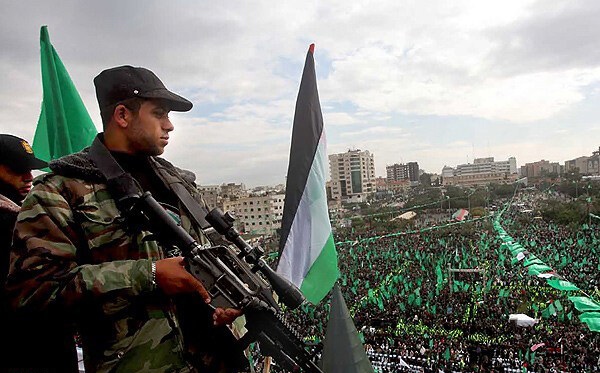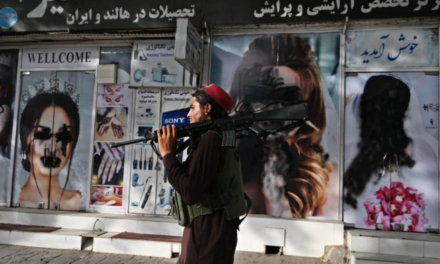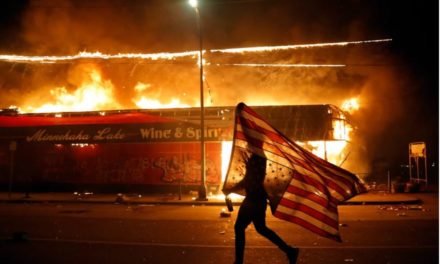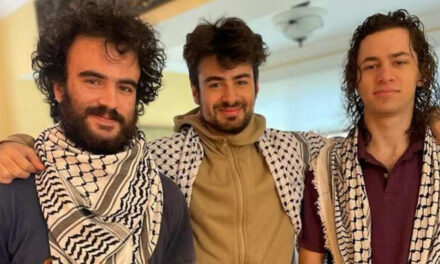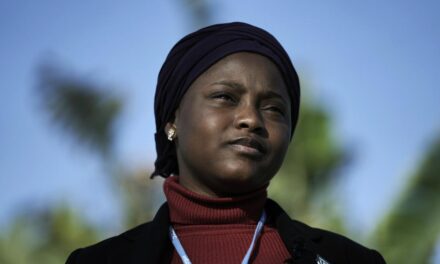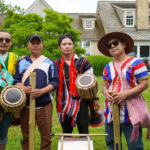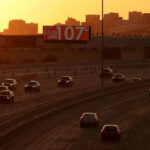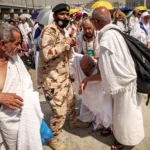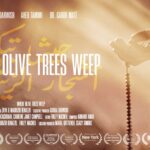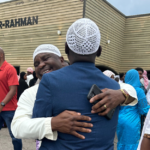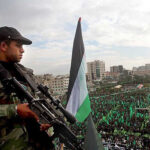This question became seemingly ubiquitous following October 7. As Palestinians defied the imagination, breaking out of Gaza after over a decade and a half of living under total air, land, and sea blockade, many found themselves having to face this question.
Whether it be from Zionists using the violence we witnessed on that day as a means of creating story after story of atrocity propaganda — to force well-meaning allies into a corner or even those who genuinely considered themselves pro-Palestine who struggled with the reality of decolonial violence — the question of whether or not Palestinian armed resistance factions deserved support or criticism became a major point of contention. It was easy for many to support the cause of Palestinian liberation when they viewed Palestinians as perfect victims, but when Palestinians fought back, suddenly the question of solidarity became muddled.
Months later, after tens of thousands of Palestinians have been murdered by Israeli Occupation Forces in Gaza amid an ongoing genocide, and after thousands in the West Bank have found themselves imprisoned or under regular attack, sympathy for those resisting their own annihilation has grown, with the conversation becoming more clear than it was in the days proceeding October 7. As videos spread by resistance factions across Gaza and Lebanon find a regular and enthusiastic audience and chants in support of those putting their lives on the line take root in protests nationwide, it is clear many have grown to accept the necessity of armed struggle in the Palestinian context, though a true consensus has yet to be achieved.
To that end, the answer to the question “Do you condemn Hamas?,” particularly for those of us on the Left as we analyze the history of Palestine and why resistance occurs in a colonial context, should have always been clear.
A violent phenomenon
As Frantz Fanon’s oft-cited statement from Wretched of the Earth has made clear, national liberation, national reawakening, restoration of the nation to the Commonwealth, whatever the name used, whatever the latest expression — decolonization is always a violent event. Palestine is not an exception to this reality.
The colonization of Palestine by Zionists, like all colonialism throughout history, brought with it widespread and constant violence levied in all forms against the Palestinian people. This was by design, as the very nature of settler colonialism is a necessarily brutal one given the end goal of the wholesale elimination of the Indigenous population in all forms but nostalgia. This violence does not simply manifest itself through the military campaigns waged by Zionist settlers and the Israeli occupation army, but through every part of the colonial endeavor itself — an endeavor that can only be sustained through the suffering, exploitation, repression, and death of Palestinians and all else that the colony wishes to conquer.
Palestinians, whether in Occupied Palestine, in refugee camps in bordering nations, or in the diaspora around the world, are forced every single day to wrestle with the reality of this settler colonial violence. The very existence of the Zionist project poses an existential threat to the lives of millions, who have in some cruel twist of reality been deemed existential threats by the project for the simple reason that their existence undermines its legitimacy.
This violence does not occur without resistance. Throughout history, whether it be in Algeria, South Africa, Ireland, or Palestine, colonized people have risen up in the face of brutal violence to free themselves from the shackles of their own oppression. This resistance does not generally start as armed struggle, but through civil disobedience, protests, general strikes, and similar tactics. Yet when these tactics fail, as they often have, or when exceptional violence is waged against the people in response, armed struggle becomes a necessity.
The colonial power, its legitimacy owed solely to the force it undertakes to maintain its existence, creates the conditions for the resistance that will rise against it. The more violence and repression colonized people face, the more they resist. Violent resistance becomes mainstream out of sheer necessity given their material conditions. This creates a cycle of violence, one perpetuated first and foremost by the violence of the colonial entity itself.
Even before the official foundation of the Zionist project in 1948, this cycle was well established. The Balfour Declaration came into existence in 1917, signifying Britain’s official endorsement of Zionist aspirations. By 1929, a fifth of Palestinians found themselves landless. By the 1930s, many Palestinians found themselves unemployed and economically destitute, as Zionist capital, backed by favorable imperial British laws and treatment, began flowing ever more intensively into Palestine, according to Ghassan Kanafani’s seminal work on the 1936 Great Palestinian Revolt.
These factors spurred resistance of their own variety, including the Buraq Uprising of 1929, efforts by Palestinians to pool resources to purchase land, sporadic violence, as well as Palestinian notables lobbying for better treatment from their British overlords. This blend of violent and non-violent efforts would all be suppressed or ultimately met with limited success.
In 1936, when British forces murdered Syrian revolutionary figure Shaykh ‘Izz al-Din al-Qassam, Palestinian popular resentment turned into a general strike, and ultimately into popular revolt, which was put down brutally by Zionist and British forces by 1939. Only a few years later, Zionists would ethnically cleanse more than 750,000 Palestinians from upwards of 530 cities, towns, and villages and kill thousands more in what Palestinians refer to as the Nakba, or the “catastrophe”. These ethnic cleansing campaigns continue up to the modern day.
Palestinians would rise up as a result of the subjugation they faced, again through a combination of violent and non-violent struggle that would be met with even more violent oppression. When Palestinians waged cross-border raids into occupied territory, they were met with a Zionist invasion in Lebanon and massacres at Sabra and Shatila. When Palestinians rose up during the First and Second Intifadas, they were met with violent crackdowns, mass arrests, and widespread violence that would lead to the intensification of their own violent resistance efforts. When Palestinians in Gaza took to marching to the wall that surrounded them in the March of Great Return, hundreds were killed and thousands more injured by Israeli soldiers. The cycle of violence continued and intensified.
Fast forwarding to today, Palestinians continue to live in bantustans in the West Bank, and what could functionally be described as a concentration camp in Gaza, with Palestinians in the 1948 and 1967 territories living under brutal apartheid management structures. They have resisted every step of the way, each time seeing thousands imprisoned, murdered, displaced, and millions utterly subjugated and exploited as the Zionist project continues toward the ultimate goal of eliminating them in all forms but nostalgia.
When armed struggle becomes material necessity
In the face of all of this violence, armed resistance organizations have risen up and established themselves amongst the people, whether they be Fatah, the PFLP, the DFLP, Palestinian Islamic Jihad, Hamas, or others. These groups, and the violence they employ, did not come to exist in a vacuum. Rather, they are the result of decades of brutal colonial violence, and the culmination of Palestinian efforts to liberate themselves from it.
The tactics they employ on the ground are the culmination of this same struggle. These groups chose to undergo operations they determined may advance their liberatory struggle. Many outside of Palestine, and even Palestinians themselves, may have disagreements with these tactics, or on a grander scale, disagreements with the core principles and ideologies of one or several of the groups deploying them. For those of us in the Western Left, however, removed from the reality of on-the-ground struggle, this cannot mean that we undermine the very legitimacy of armed struggle itself.
Hamas is a key example of this. Like them or not, the efforts they have waged and continue to wage have made more of a material impact toward the liberation of Palestine than anything any of us in the West will ever make. They are taking on the brutal violence of colonial power and waging a campaign of armed struggle that has, at the current moment, with coordination with other resistance factions, made the Zionist colony more of a pariah than it has ever been on a global stage and shattered the image of military invincibility and overall stability it has spent decades cultivating. Countless years of struggle have culminated in this flashpoint.
The path forward, as history has repeatedly shown, will be largely forged through the armed struggle of resistance factions on the ground. Their very survival depends on it, and it continues to challenge and erode the power of the Zionist entity itself.
Palestinian armed resistance has forced the Zionist project to wage an increasingly violent campaign that is sharpening contradictions in such a way as to lead to its continued unraveling. As the masses in the imperial core, specifically those of the United States, come to realize that their interests are at odds with the interests of the Zionist project and their government leaders who are sustaining the project’s ongoing genocide, the traditional support base the project relies on has eroded. In its place is an ever-increasing mass standing in firm support of Palestinians, rather than their colonizers.
In Palestine, the Palestinian struggle for liberation has developed what can be called a “Popular Cradle” of resistance — a state of unity and cohesion that has developed between the Palestinian armed resistance and broader Palestinian society. That “popular cradle,” as the Palestinian Youth Movement has so aptly described it, has worked as an organ of the liberation struggle by conceptualizing resistance as both a normal and necessary state of being. This has led to a reality where the resistance is sustained by the masses themselves, who support them and readily accept the consequences of their continued fight for liberation.
That armed struggle, a material necessity, is reaping material results, even in spite of mass violence, crackdowns, and a campaign of outright genocide. In Gaza specifically, that very struggle in no small part led to the withdrawal of Zionist settlers from the territory which forced Zionist planners to rework how they went about their occupation of Gaza. The struggle has kept Israeli Occupation Forces from entering Jenin and other refugee camps across historic Palestine without serious consequence. In many ways, the resistance struggle has been a key element of continued Palestinian survival.
Moving past the question
The question of whether we condemn Hamas is more than just a question of condemnation. At its core, we are being asked to disavow decolonial violence altogether — to support Palestinians only when they are perfect victims or only when the groups waging liberatory struggle align with the values of our ideologies and fraternal parties. It is a question that acts as a trap and misses the point entirely.
We cannot make the mistake of engaging seriously with such an obfuscation. It is on us, especially those of us on the Left, to understand that the core driver of the violence we are seeing is and always has been Zionist settler colonialism. This cycle of violence is perpetuated not by the colonized, as they seek to liberate themselves from the state of total subjugation and brutal reality of genocidal liquidation, but by the Zionist project and those advancing its interests.
The question we have to ask ourselves, and indeed answer, is not whether we condemn Hamas, but whether we condemn a settler colonial regime that makes armed struggle necessary for survival.
